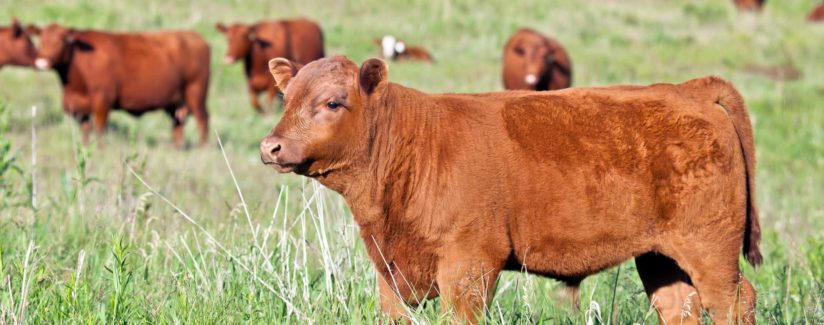
Why Are Animals Given Hormones? Part 3
10/16/2018
All living plants and animals naturally produce hormones and sometimes farmers given animals additional hormones. We have looked at hormones in food and the difference between plant and animal hormones.
We reached out to two experts from Pennsylvania State University to understand why livestock producers use hormones. Dr. Troy Ott is a reproductive biologist and professor of reproductive physiology, and Dr. Tara Felix is a beef extension specialist.
Should I be worried about added hormones in my meat or milk?
Dr. Ott and Dr. Felix: “No. The amounts of added hormones used, and the approval process required by the FDA, ensure that there is no risk for human consumption. We both serve meat and milk from hormone-treated animals in our homes because we know that it is safe and that it results in more efficient production – helping the farmer and the environment.”
What species of animals can be given hormones?
Dr. Ott and Dr. Felix: “Among the major livestock species, no added hormones are given to poultry or pork in the United States. There are several hormones that can be used for cattle and sheep. Many of the hormones administered to cattle and sheep are used to regulate their reproductive cycles. These techniques are like those conducted on humans (think birth control and in vitro fertilization). For beef cattle, hormones can also be used to improve growth efficiency.”
In Canada, beef cattle are the only species that are given added hormones.
How are these hormones administered to animals?
Dr. Ott and Dr. Felix: “Hormones can be given through the feed, by direct injection, or by slow release implant placed under the skin of the ear.”
Why are animals given hormones?
Dr. Ott and Dr. Felix: “Consumers should know that hormones are used to make livestock production more efficient. If an added hormone can increase milk production per cow by 15% or growth by 10%, then we can make the same amount of product with fewer animals using fewer resources (land, water, feed) and have less impact on the environment. This last point is critical – with the population of the planet expected to increase by 2 billion people (the equivalent of two more Chinas in population) by 2050, agriculture needs to become more efficient. Estimates are that we will need 50 to 70% more food, and that food will need to be produced while reducing the impact of agriculture on the environment, i.e. using less land, feed and water.”
How is hormone use regulated?
Dr. Ott and Dr. Felix: “The use of hormones in livestock is regulated by the United States Department of Agriculture and the Food and Drug Administration. These agencies evaluate the safety and effectiveness of added hormones for the animals and for the humans who consume their products. This is an extensive and costly process that is conducted by animal scientists, veterinarians, and physicians. For hormones to get approved by the FDA, they must meet all the criteria necessary to be deemed “safe” by the FDA. Those criteria are the absence of:
- residue in edible tissues
- chronic physiologic effects
- acute toxic effects
- mutagenic potential
- carcinogenic potential
“In short, hormones go through rigorous testing to ensure that they are safe for use and do not bring harm to humans or animals. This is an added safety mechanism even though most of the hormones used are used at such low amounts that they would not present a safety risk for humans.”
We hear from parents who are concerned about the impact of hormones in food regarding their children. What advice would you give them?
Dr. Ott and Dr. Felix: “We encourage parents who are worried to seek out the facts on this topic and we have included a few good sites to start the learning process. Be wary of people or web pages trying to scare you about the food supply. Typically, these people and web sites are also trying to sell you something. Beware of anything that follows the word ‘detox’ as this is one of the most frequent scams people encounter on the web. More than 99% of the toxins your body ingests are natural toxins found in plants. If you follow the USDA My Plate recommendations, the only detox you will ever need will be handled by your liver.
“It is important to remember that we have the safest, most abundant and affordable food supply in history. Many dedicated scientists and farmers are working hard to continue these achievements and meet the challenge of feeding a growing global population sustainably. This can only happen if consumers are able to learn the facts about modern food production. Remember, facts – not fear.”
Resources for more information:
- FSIS USDA Beef from Farm to Table
- National Chicken Council- Chickopedia: What Consumers Need to Know
Some animals are given hormones to produce food more efficiently, using less land, feed and water. The use of added hormones is carefully regulated by government agencies and the food supply is monitored to ensure compliance with these regulations. The amount of hormones used and the approval and monitoring process ensure that all animal products are safe for children and adults to eat.



























